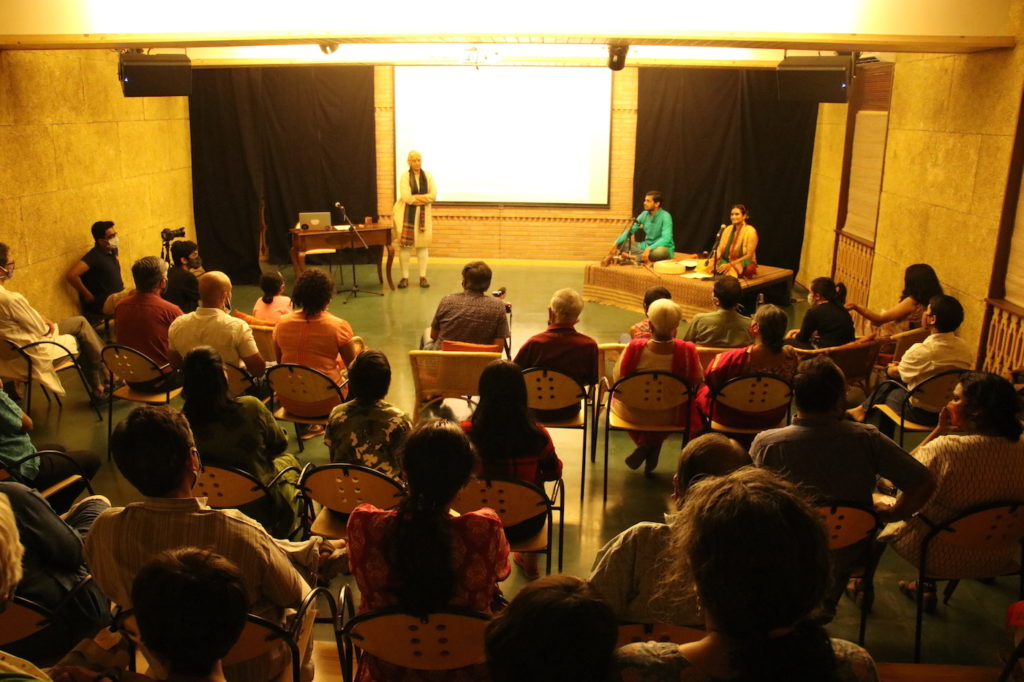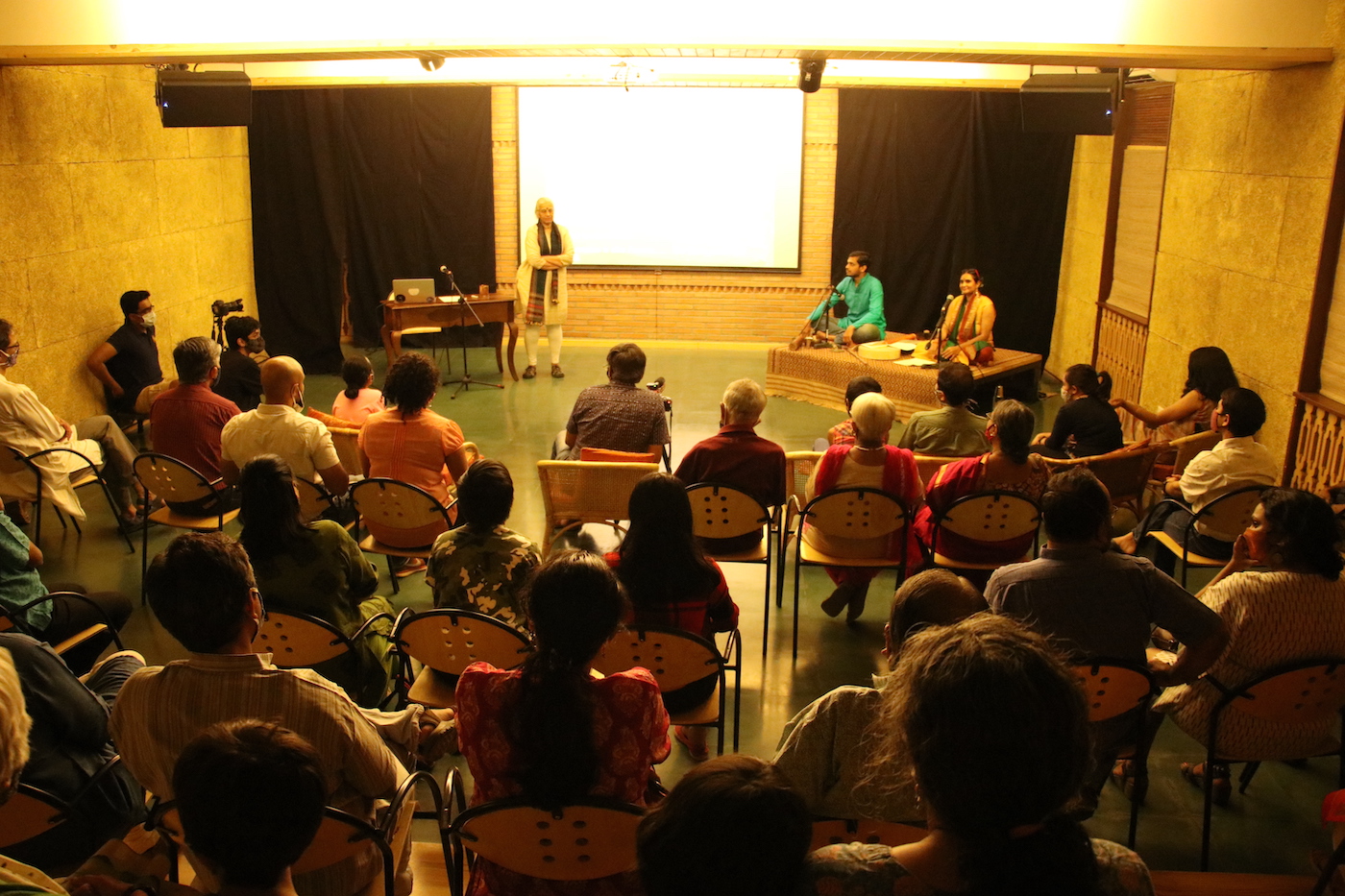Our Place in Space
Our Place in Space is the second theme exploring the sky above and all the magic it has to offer. As we dig far and wide into the known and the unknown, we are seeking answers to who we are in the context of this mysterious universe.
Here’s how week 1 of this magnificent theme unfolded.


The Universe: A Cosmic Journey
The opening event – A Cosmic Journey, couldn’t have started better. A fusion and intermingling of music and the cosmos was beautifully put together by Prajwal Shastri, Nandini Ram Mohan and Sriram. Prajwal, an astrophysicist and Nandini and Sriram, both music enthusiasts, took us through this cosmic journey that had the audience captivated throughout. Prajwal’s presentation about the cosmos was accompanied with Nandini’s melodious Brindavani raga and the beautiful music played by Sriram with his violin. There was a creative use of musical instruments and carnatic music to portray elements like stars, nebulas, the black hole, or just simply put – the cosmos. Nandini says that she connects better with music when she thinks of clouds or planets.
Prajwal took us through the journey as she talked about the myths around the world about the vast universe – from the Greek drama of the mythological creatures on the space dome to the Australian myth of the emu made from the dark patches of the Milky way. She talked about how, even in the early days of astronomy, there were astronomers around the world who recorded great cosmic events like the supernova that resulted in the crab nebula. She gave us insights about the various physicists and astronomers who tried to tell the truth about the heliocentric model but were instead punished for their heretical ideas.
That was not all.
Did you know that there is a black hole in the centre of every galaxy?
And did you know that a supernova can cause a ripple in space time?
One of the most striking things she mentioned was that when the scientists took a part of the sky to research, they found 10000 galaxies and a 1000 billion stars. And, this area researched was just one tenth the area of the moon! This pointed out to us what a small little speck we are in the vast universe.
Of course, all this was interspersed with Sriram’s musical instruments and Nandini’s singing. Their passion for music was shown and portrayed in their every raga and tala.
The music was like a symphony of the universe and was completely out of this world (literally) and left the audience spellbound and speechless!


Workshops for the family with Think Tac
This workshop organised by Proteep Mallik and Procheta Mallik was an interactive session with kids of all ages. Children were involved in hands-on activities like lining up different balls to show the relative sizes and the distances between planets and the sun, younger kids made flip books of the phases of the moon while the older kids made a cardboard model of a sundial. They also looked through a telescope to see the sun. Later on, they built a sextant and a model of the sun and earth using magnets. The motive was to engage the children in fun activities through which they learnt more about space. It was an enjoyable experience for children and parents alike!


‘Dust Grains to Nuclear Ashes: the short introduction to astronomy
The first week of ‘Our Place in Space’ closed with a talk by D C V Mallik, an astronomer with over 40 years of experience and P. Sreekumar, a professor at ISRO, with over 35 years of experience. Mr. Mallik started off by telling us how most of the elements synthesised are from the stars, about their intrinsic brightness and how they compute the stars’ mass and how stars are formed. He also talked about how the dust grains between the stars scatter their light and make them appear a different colour. The main highlight when he talked about how stars generate energy.
Sreekumar talked about binary stars, how the temperature of the stars are measured and X ray telescopes. It was fascinating to hear about the milky way galaxy and active galaxies. The audience was especially awed by the photo of Saturn, and the photo of earth taken from Saturn by the spacecraft CASSINI (it was a tiny blue dot). There are so many things that we know from this amazing technology. Who could think one day someone was going to build a spacecraft that could go to Saturn, or a telescope by which we could see what the milky way looks like!

Exhibition of Our Place in Space
The exhibits at Koota for ‘Our Place in Space’ consists of the spectacular Astro photography by Jeeth Iype, some very informative posters on space by NatGeo, ISRO and BBC and a moon box, through which you can see the different phases of the moon. This exhibition is open throughout these three weeks. It is put together to explore the wonders of astronomy for all to marvel at. Come and find answers to questions like does the sun also rotate, what does the milky way look like, how were the planets formed? If you are curious, you might find some answers!



